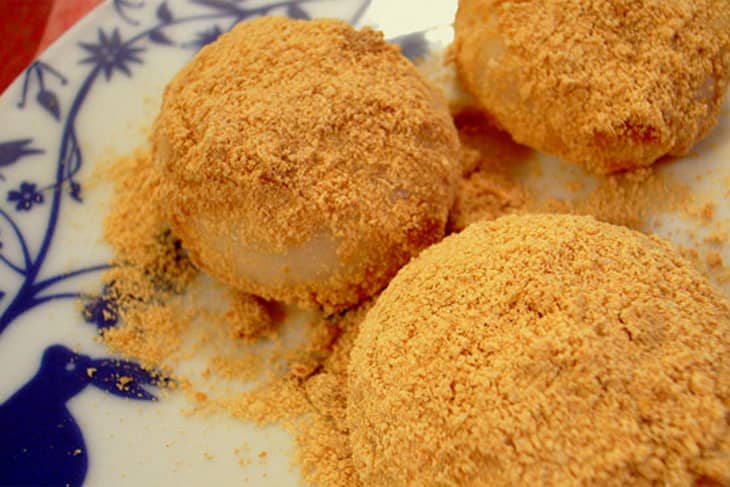Ingredient Spotlight: Kinako
A New Year’s tradition in Japan is eating warm, freshly pounded mochi under a thick dusting of a toasted soybean flour called kinako. Pounding mochi probably deserves to be a once-a-year task, but eating kinako shouldn’t be. Toasty and nutritious, it is as good baked into quick breads as it is sprinkled on toast, with a comforting flavor reminiscent of peanut butter.
Made from ground roasted soybeans, kinako can be substituted for up to a third of the all-purpose flour in a recipe without affecting the texture. We have had great success adding it to pancakes, quick breads and cookies, but we like it even better in desserts like ice cream where its flavor takes center stage. (David Lebovitz’s The Perfect Scoop includes a recipe.)
In Japan the flour is traditionally eaten with warabi mochi, a fern-flavored jelly usually served during the hot summer months, but modern-day Japanese also enjoy it dusted over ice cream or plain yogurt, mixed into milk, and sprinkled on buttered toast with cinnamon and brown sugar.
Because of its high oil content, kinako should be stored in an airtight container in the refrigerator after opening, or frozen if you are storing it for more than a few weeks. But if you love its light, nutty flavor as much as we do, it won’t last that long.
Kinako Recipes to Try:
• Toasted Mochi in Soybean Flour (Kinako Mochi) – CHOW
• Vegetarian Cake Provençal With Kinako – Just Bento
• Kinako Polvorones (Traditional Spanish Cookies) – Køkken 69
Related:
Japanese Street Food: Dango
(Image: Flickr member yoppy licensed under Creative Commons)
